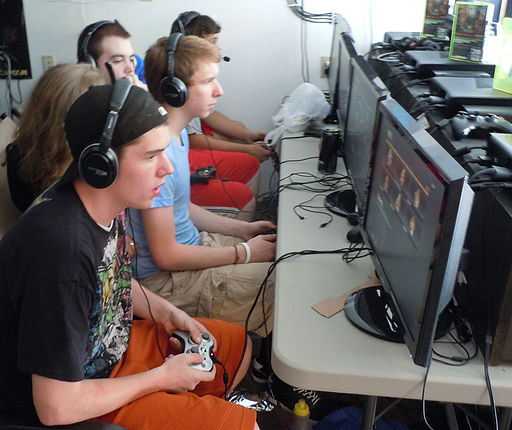Playing the Past Using Virtual Environments
4 Mars 2015 - 8:21am
 The advancement of technology has contributed to a different way of teaching and learning. How can historians and history teachers best use virtual environments (VE) to teach historical thinking in the classroom? The chapter by Kee and Darbyson in THEN/HiER's book New Possibilities for the Past provides insight into the opportunities of implementing VE in history classrooms.
The advancement of technology has contributed to a different way of teaching and learning. How can historians and history teachers best use virtual environments (VE) to teach historical thinking in the classroom? The chapter by Kee and Darbyson in THEN/HiER's book New Possibilities for the Past provides insight into the opportunities of implementing VE in history classrooms.
Kee and Darbyson’s chapter analyzes how VEs provide “students with opportunities to encounter historical thinking in new and innovative ways” (2012, p. 264). The VEs offer single-player and multiplayer games which attempt to simulate a virtual world. Users can navigate the space of a specific historical event; become a time-traveller tasked with the work of a historian; or, learn through a simulated excavation at an archaeological site (Kee and Darbyson, 2012, p. 272-273). The opportunities for a VE can accommodate a variety of educators’ classroom needs.
Kee speaks to the notion of multiple user identities in VEs including: one, virtual identity; two, real-world identity; and three, a projective identity (2012, p. 276). This form of gaming can encourage and motivate students to learn history. Arguably, students can take risks in the virtual world because the “cost of failure is low” (Kee and Darbyson, 2012, p. 277). However, this is not the only advantage. Roussos and Mumtaz have argued that the effects of immersing VEs in the classroom can have a motivational impact and also promote delight in learning (2012, p. 266).
Using VEs in the history classroom is an innovative application for all learners. VEs can take the shape of biographical recounts, which allow users to revisit events of a person’s life in which students are not “joining the actors on stage, but rather becoming actors by engaging in an act of role play” (Kee and Darbyson, 2012, p. 270). Or, they can participate in historical recounts, which allow students to understand past events using “time as an organizing principle” (Kee and Darbyson, 2012, p. 271). Lastly, they can experience factorial explanations, which require the user to answer questions that may have several explanations or outcomes.
In many ways VEs can be used to teach students to think like a historian however, more research needs to occur to understand in what ways VEs can support historical thinking. VEs provide the substantive content for users to learn and acquire historical skills. There are many opportunities for students to learn and arguably, “they are likely to retain the knowledge and skills long after they are first acquired” (Kee and Darbyson, 2012, p. 276). Therefore, VEs encourage the user to take a historical perspective, become motivated and strengthen their skills to view history as historians do.
What do you think, how can we use VEs to support the teaching and learning of historical thinking?
Works Cited:
Kee, K. & Darbyson, N. (2012). “Creating and Using Virtual Environments to Promote Historical Thinking.” In Penney Clark, Ed. New Possibilities for the Past (p. 264- 282). Vancouver: UBC Press.
For further reading, check out THEN/HiER sponsored book Pastplay
Photo credit: By Lou Sander (Own work) [CC BY-SA 3.0 (http://creativecommons.org/licenses/by-sa/3.0)], via Wikimedia Commons
- Se connecter ou créer un compte pour soumettre des commentaires

